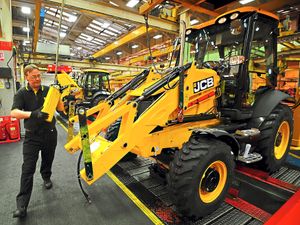Finning reports 32pc reduction in carbon emissions
Finning UK and Ireland has cut its scope 1 and 2 emissions by 32 per cent its latest sustainability report has confirmed.
As part of its sustainability policy the company, the world’s largest dealer of Caterpillar machines, parts and aftermarket services with its UK HQ in Cannock, has a global aim to cut scope 1 and 2 ‘direct emissions’ by 40 per cent by 2027 – measured from its 2017 baseline.
In the UK and Ireland, the reductions were achieved partly by the proactive sourcing of renewable energy with 85 per cent of the company’s electricity coming from renewable sources last year. In the UK and Ireland, the company aims to ultimately rely on alternative energy to provide 100 per cent of its energy.
The recently released sustainability report for 2023 also demonstrated the growing success of the company’s rebuild programme, with 15,694 parts being remanufactured. This helps to reduce waste, energy and the use of raw materials – supporting both the sustainability targets of Finning and its customers.
The new generation of Cat machines are equipped with technology to reduce fuel use and monitor efficiency while Finning provides a range of digital services to help operators and fleet managers reduce costs and cut emissions at the same time through lower fuel consumption.
Keith Oakes, head of safety, health, environment and quality, said: “We take a broad view of sustainability and, as well as taking responsibility ourselves, we see helping our customers reduce their emissions as a huge opportunity to make a positive difference to support global emissions targets.
“We have introduced a number of energy saving measures across our sites, including switching to LED bulbs and are in the process of installing solar panels at our UK headquarters in Cannock.
“In turn, wherever possible, Finning supports customers in introducing productivity solutions focused on driving fleet efficiencies which lower their fuel consumption, carbon footprint and total cost of ownership leveraging optimal equipment features, along with the option of ECO Drive training for operators.”
Finning has also made positive changes to its overall waste management performance and now recycles 95 per cent non-hazardous and 100 per cent of its hazardous waste material.





